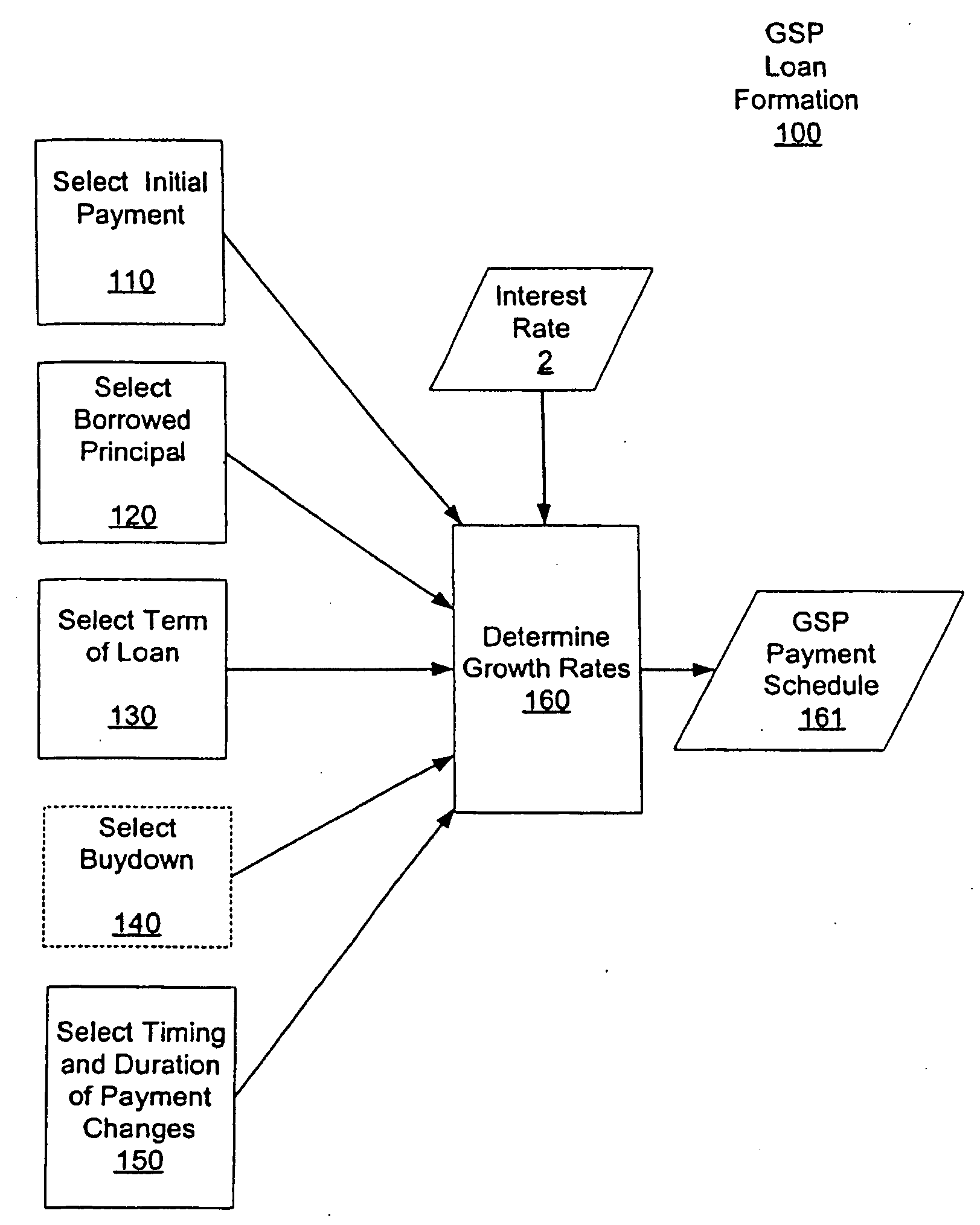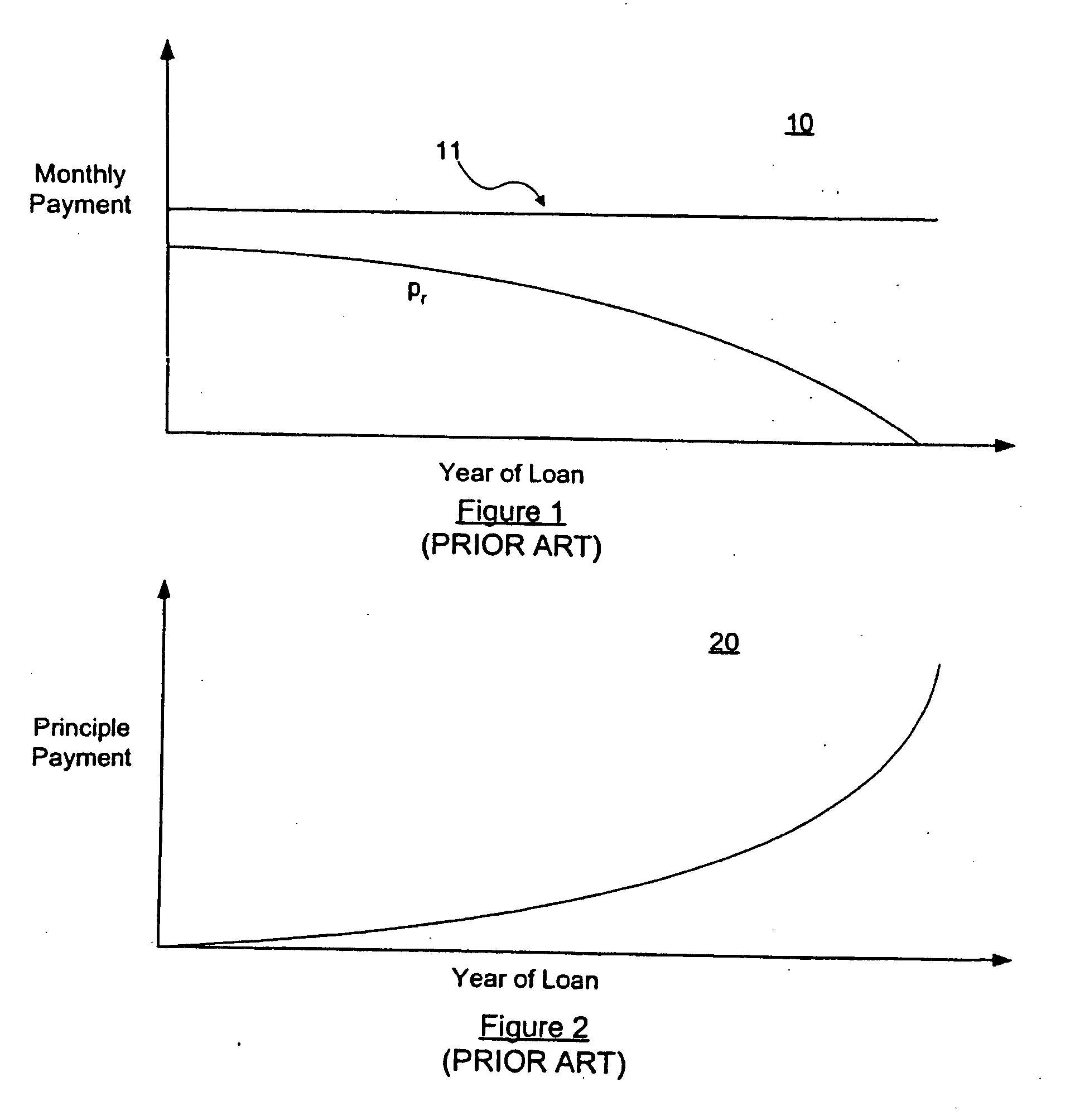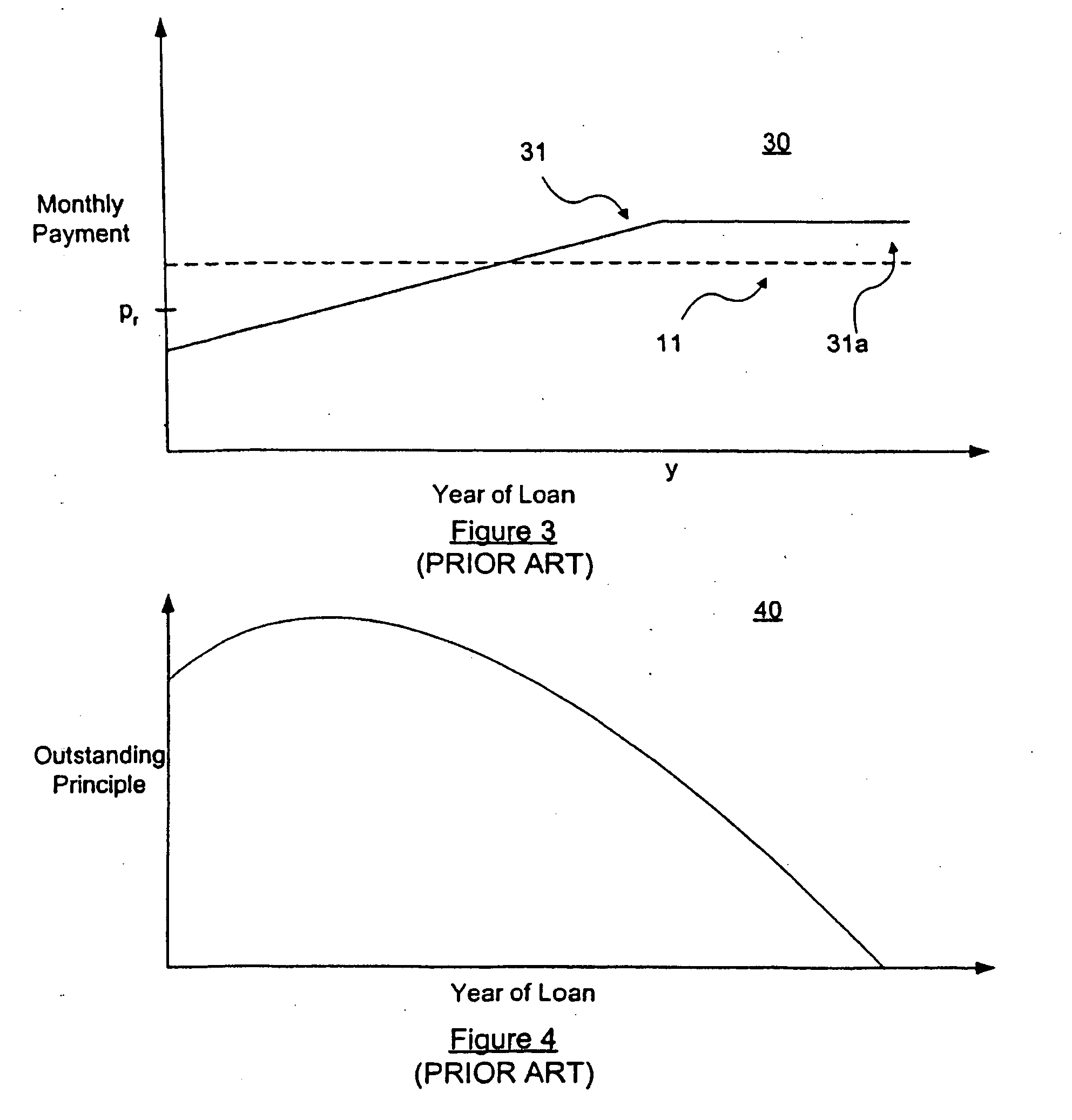Fixed rate gradually stepped payment loan
a technology of fixed rate and gradual stepping, applied in the field of system and method for forming an improved lending instrument, can solve the problems of borrowers being exposed to the significant risk of sizable near-term increases in payments, difficulty in initiating payments for many borrowers, and difficulty in completing initial payments, etc., to achieve substantial savings, lower initial loan payments, and higher yield
- Summary
- Abstract
- Description
- Claims
- Application Information
AI Technical Summary
Benefits of technology
Problems solved by technology
Method used
Image
Examples
Embodiment Construction
[0044]As depicted in FIG. 7, a conventional loan formation 70 uses several input variables, including an amount of borrowed principal 1, an interest rate of the loan 2, and a term of the loan 3. In step 4, the monthly payments are then determined to so that the present value of the stream of the loan payments equals the borrowed principal 1.
[0045]Present value is based on the assumption that, because money invested today will be worth more in the future, people will pay less today for an amount of money to be received in the future. An amount x today invested at an interest rate r would be worth x*(1+r)n in n years. Conversely, an amount y to be received in n years would be worth (have a present value of) y / (1+r)n today. The process of calculating the present value of a future amount of money by dividing it by the sum of 1 plus the interest rate r compounded for n years is called discounting, where r is referred to as the discount rate. Payments increased by (1+r / 12)n / 12 are said to...
PUM
 Login to View More
Login to View More Abstract
Description
Claims
Application Information
 Login to View More
Login to View More - R&D
- Intellectual Property
- Life Sciences
- Materials
- Tech Scout
- Unparalleled Data Quality
- Higher Quality Content
- 60% Fewer Hallucinations
Browse by: Latest US Patents, China's latest patents, Technical Efficacy Thesaurus, Application Domain, Technology Topic, Popular Technical Reports.
© 2025 PatSnap. All rights reserved.Legal|Privacy policy|Modern Slavery Act Transparency Statement|Sitemap|About US| Contact US: help@patsnap.com



